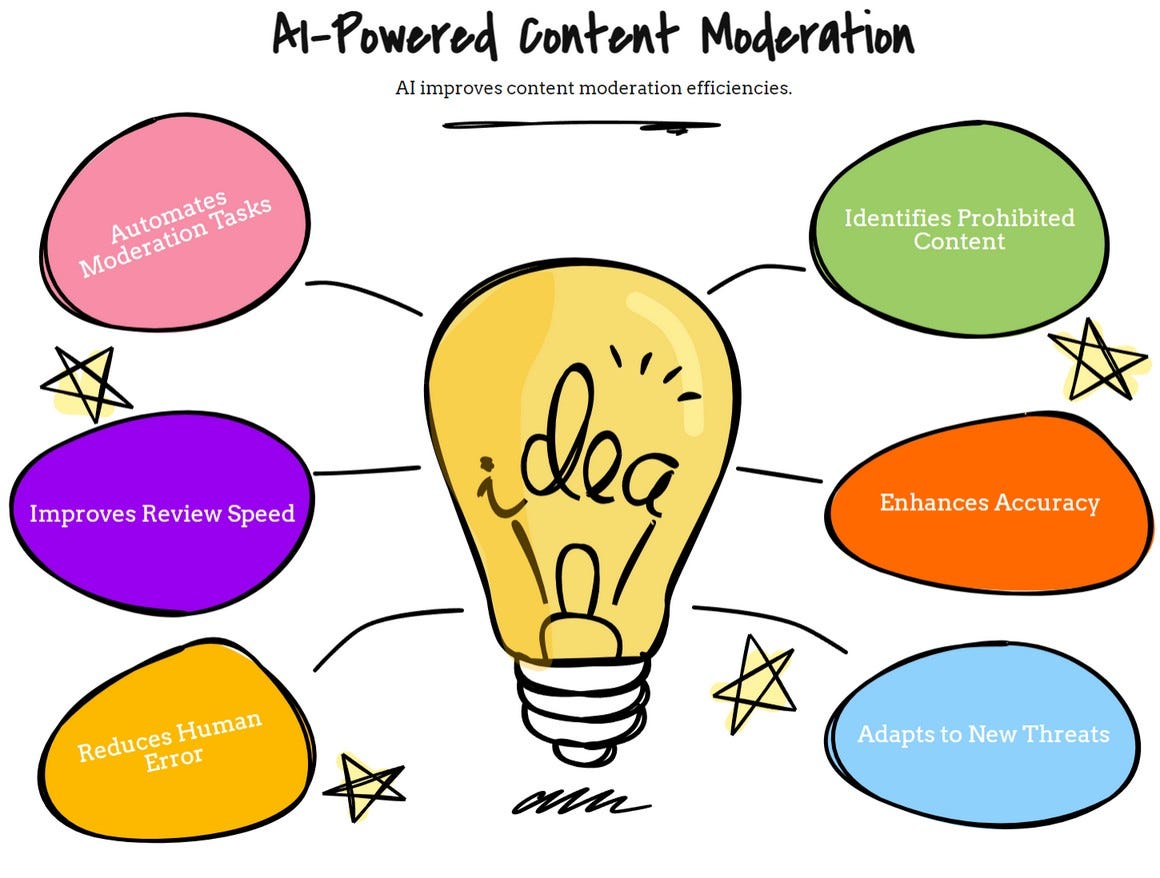How Etsy Uses Machine Learning to Keep Content Safe
How AI Protects the Marketplace and Builds Trust
🚀 TL;DR 🚀
Etsy leverages supervised machine learning and human moderators to ensure content safety at scale. Their approach combines labeled datasets, robust feature engineering (text and image analysis), and regular model updates to adapt to new trends while minimizing false positives and negatives. Here’s how they do it and what engineers can learn.
🔧 So What Are the Requirements?
Content moderation at Etsy needs to meet several key requirements:
Scalability: The system must handle millions of listings daily without delays.
Accuracy: False positives (flagging valid content) and false negatives (missing harmful content) must be minimized.
Adaptability: The system should evolve with trends and tactics used to bypass moderation.
Bias Mitigation: Models must avoid unfair outcomes due to biased training data.
Human Collaboration: Automation should assist, not replace, human reviewers for nuanced cases.
🌐 Etsy’s Machine Learning Approach
Etsy’s solution involves a layered system of machine learning models supported by human oversight. Here’s a technical breakdown:
Data Collection:
Etsy moderators tag listings for violations, generating labeled datasets.
These datasets are diverse and continuously updated to represent evolving content patterns.
Feature Engineering:
Text Analysis: NLP models analyze titles, descriptions, and metadata to identify policy violations (e.g., banned keywords or suspicious phrases).
Image Analysis: Computer vision models process images to detect prohibited symbols, items, or patterns. Techniques like convolutional neural networks (CNNs) are employed.
Model Training and Scoring:
Supervised learning algorithms train on labeled data, optimizing for precision and recall.
Listings receive a violation score based on model predictions, prioritizing high risk content.
Human-in-the-Loop:
Listings with borderline scores are escalated to human reviewers.
Feedback from reviewers is looped back to retrain and refine models.
Model Deployment:
Models are deployed via scalable cloud services, ensuring low-latency predictions.
Regular A/B tests evaluate model performance in production.
🚀 Key Challenges and Solutions
Etsy’s journey with machine learning in content moderation has faced several challenges, each met with tailored solutions. The issue of false positives and negatives was particularly significant. Overly strict models that flagged legitimate content risked alienating sellers, while lenient models allowed harmful content to slip through. Etsy addressed this by striking a balance between precision and recall, relying on continuous model retraining and carefully labeled datasets to refine predictions.
Another major challenge was adapting to evolving content. As trends and tactics for evading moderation constantly change, static models quickly become outdated. To counter this, Etsy implemented a system of regular content reviews and model updates, ensuring that new patterns were swiftly incorporated into the system. Finally, biases within training data posed a risk of unfair outcomes, prompting Etsy to use diverse datasets and fairness-aware algorithms to mitigate these issues. Each challenge was met with a commitment to scalability, adaptability, and fairness.
🎨 Continuous Improvement
Etsy ensures their system stays robust by:
Monitoring Performance: Using live metrics and feedback loops to detect issues.
A/B Testing: Comparing new models against existing ones to measure impact.
Feedback Integration: Incorporating insights from human reviewers into model retraining.
Scalability Enhancements: Leveraging cloud native technologies to handle increasing workloads.
🌟 Why It Matters
Etsy’s approach benefits all stakeholders:
Sellers: Enjoy a fairer marketplace where listings comply with policies.
Buyers: Browse safely with reduced exposure to harmful content.
Moderators: Focus on high-impact cases while automation handles repetitive tasks.
🔄 Takeaways for Senior Engineers
If you’re building a similar system, consider these lessons:
Keep reading with a 7-day free trial
Subscribe to Byte-Sized Design to keep reading this post and get 7 days of free access to the full post archives.



